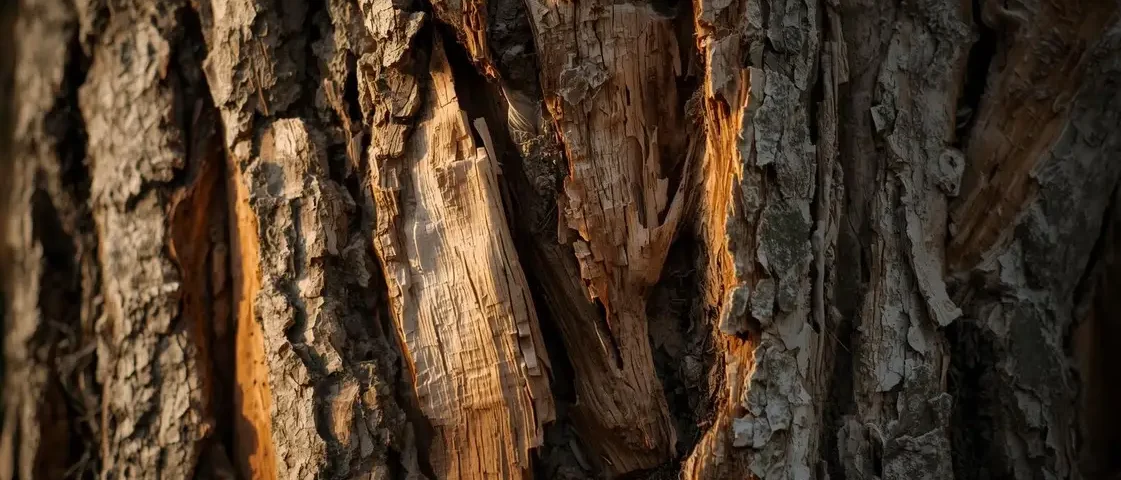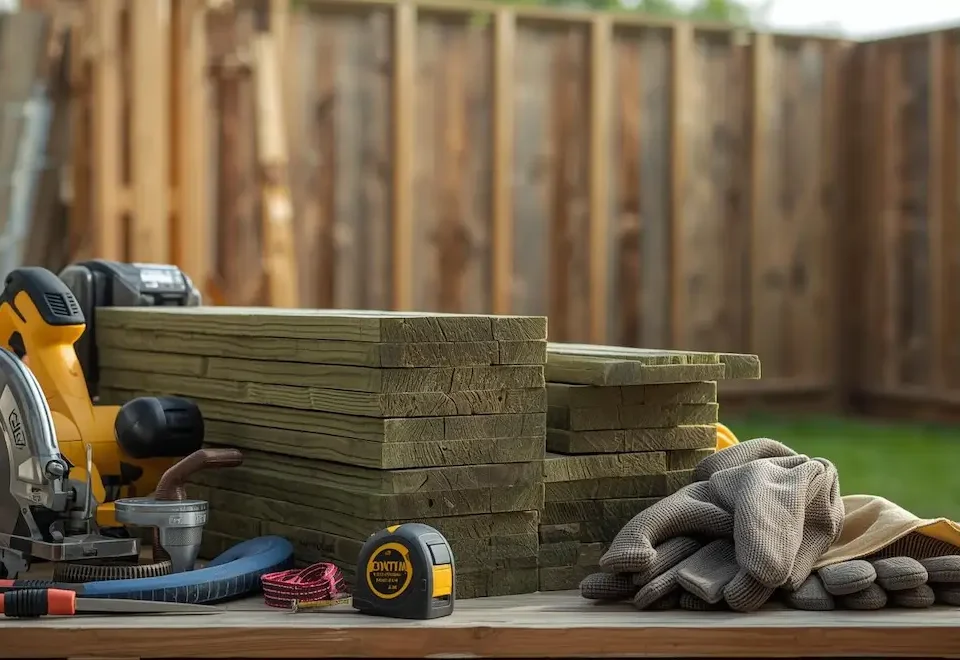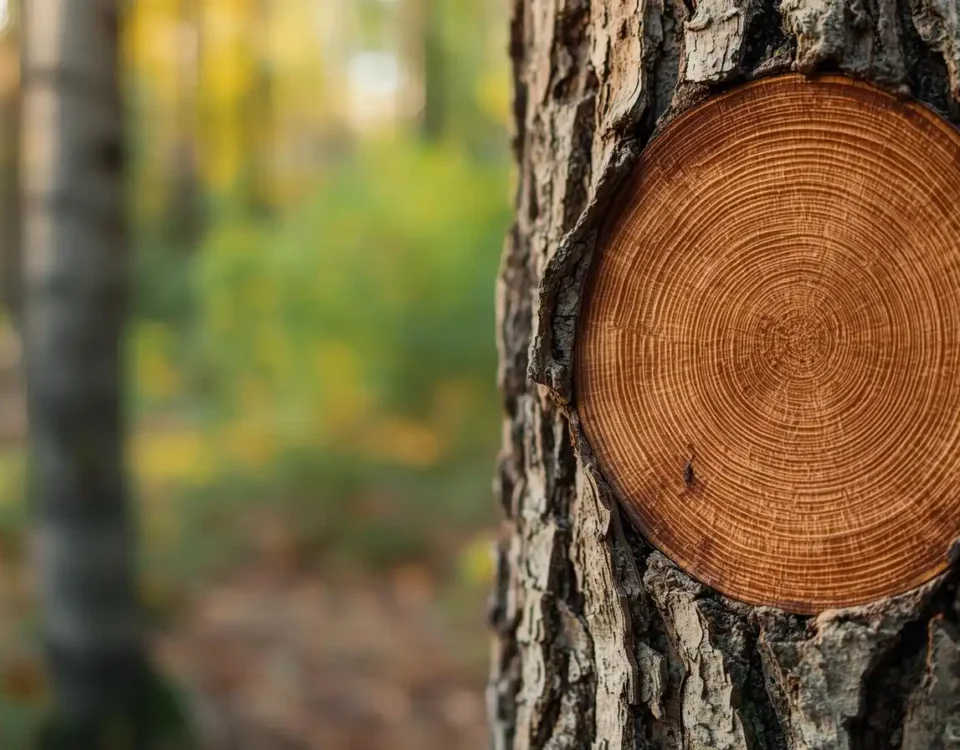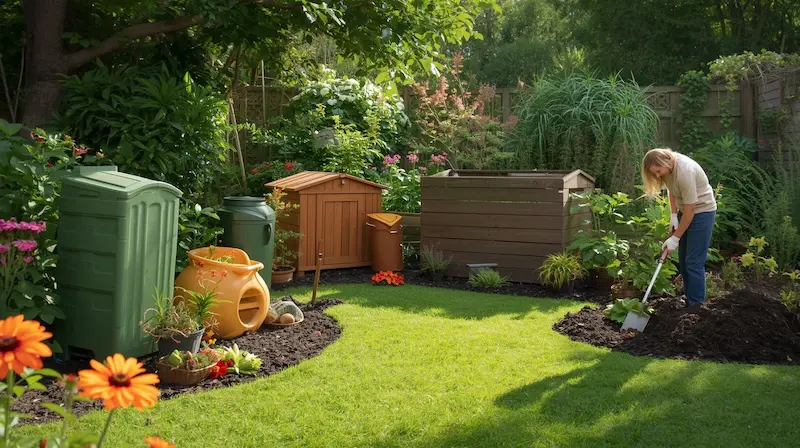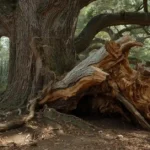
Sudden Branch Drop Syndrome Causes, Prevention & Management for Homeowners
October 11, 2025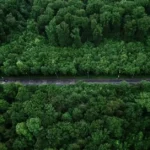
The Trillion Tree Truth How Many Trees Exist and Why It Matters
October 13, 2025How to Identify Tree Bark , Diagnoses, and Treat It
Spotting peeling bark on your favorite tree can immediately raise concern. Is this a natural process, or a warning sign of something more serious? This common dilemma often leaves homeowners feeling unsure and anxious about the health of their valued trees.
Your tree’s bark is more than just an outer layer, it’s its primary defense against pests, disease, and environmental stress. Changes to the bark can reveal a lot about your tree’s overall well-being. Understanding these changes is like learning your tree’s own language.
This comprehensive guide will help you decode those signals, showing you how to distinguish between normal bark shedding and issues that require urgent attention. By the end, you’ll be able to identify common causes of problematic peeling bark, understand effective treatments, implement preventative measures, and know exactly when it’s time to call a professional arborist. With this knowledge, you can make informed decisions to keep your trees healthy and thriving.
Why Tree Bark Is So Important: Decoding Your Tree's Vital Outer Layer
Tree bark is far more than a rough outer shell, it’s an essential component of your tree’s health and survival. According to the International Society of Arboriculture (ISA) and research from university extension programs, the bark serves multiple critical functions that protect, support, and sustain the tree. Understanding these roles can help you spot problems early and take appropriate action.
The Bark’s Multifaceted Role
Protection from the Elements
Bark shields the delicate inner tissues from harsh sunlight, frost, wind, and other environmental stressors. It also acts as a physical barrier against mechanical injuries caused by lawn equipment, animals, or accidental impacts. This protective layer is your tree’s first line of defense against daily hazards.
Defense Against Pests and Diseases
Bark prevents harmful insects and pathogens from entering the tree. Some tree species even produce chemical compounds within their bark that naturally deter pests, providing an extra layer of defense. When the bark is compromised, these protective benefits are significantly reduced, leaving the tree vulnerable to infestations and disease.
Nutrient and Water Transport (Phloem)
Beneath the outer bark lies the phloem, or inner bark, which is essential for transporting sugars produced during photosynthesis from the leaves to the roots. Damage to the phloem can disrupt this nutrient flow, effectively starving the tree and slowing its growth or even leading to decline over time.
Structural Support
Bark also contributes to the overall strength and integrity of the tree trunk. While it may seem like just a covering, healthy bark works with the cambium and xylem layers to maintain the tree’s stability and resilience against environmental stress.
Consequences of Compromised Bark
When bark is damaged or peels excessively, the tree becomes more susceptible to:
- Environmental stressors like sunscald, frost damage, and extreme weather.
- Pests and diseases can more easily enter through exposed areas.
- Disrupted nutrient flow, potentially causing widespread decline or death.
Maintaining healthy bark is therefore crucial for your tree’s long-term survival. Keeping an eye on changes and understanding what’s normal versus concerning allows you to take timely action and protect your landscape investment.
Visual Suggestion: Include a detailed diagram showing a cross-section of a tree trunk, clearly labeling the outer bark, inner bark (phloem), cambium, and xylem, with brief notes on each layer’s function.
Natural Bark Shedding vs. Problematic Peeling: How to Tell the Difference
Seeing your tree’s bark peeling can be alarming. Homeowners often struggle to tell whether it’s a natural process or a warning sign of disease or stress. Understanding the difference is crucial to maintaining your trees' health.
Expert Tip: Know Your Tree Species
Different tree species shed bark in different ways. Familiarizing yourself with your specific tree is the first step in accurately diagnosing whether peeling is normal or a cause for concern.
Understanding Normal Bark Exfoliation
Species-Specific Characteristics
Some trees are naturally known for their distinctive, peeling bark patterns:
- Sycamore (Platanus occidentalis): Flaky, mottled bark that peels in irregular patches, revealing lighter inner bark.
- River Birch (Betula nigra): Papery, reddish-brown bark that peels in thin, curly strips.
- Crepe Myrtle (Lagerstroemia indica): Smooth, mottled bark that sheds in thin flakes, exposing paler new bark.
- Redbud (Cercis canadensis): Small, dark, scaly bark that sheds to reveal an orange-brown inner layer.
- Dogwood (Cornus florida): Develops a distinctive “alligator hide” pattern that flakes off with age.
Growth-Related Shedding
As trees grow, their bark must expand. In some species, this natural expansion causes the outer layers to crack and peel, accommodating new growth.
Appearance of Naturally Shed Bark
Healthy bark shedding typically exposes lighter, smoother, and healthier inner bark. The peeling is generally uniform and consistent with the tree species, without signs of stress or damage.
Signs of Problematic Bark Loss
Certain patterns indicate your tree may be in distress:
- Irregular Patterns: Uneven peeling, patchy loss, or peeling confined to one side, often with deep cracks not typical for the species.
- Discoloration: Darkened, water-soaked, sunken, or otherwise discolored areas on the bark or exposed wood.
- Presence of Pests: Visible insects, sawdust-like frass, boreholes (round or D-shaped), or tunnels under the bark.
- Oozing Sap or Foul Odor: Sticky, discolored sap or a foul smell can indicate bacterial infection or severe stress.
- Underlying Wood Condition: Exposed wood that is soft, discolored, rotting, or shows fungal growth signals disease or decay.
Accompanying Symptoms: Wilting leaves, premature leaf drop, stunted growth, cankers (sunken lesions), or dying branches are strong indicators that your tree needs attention.
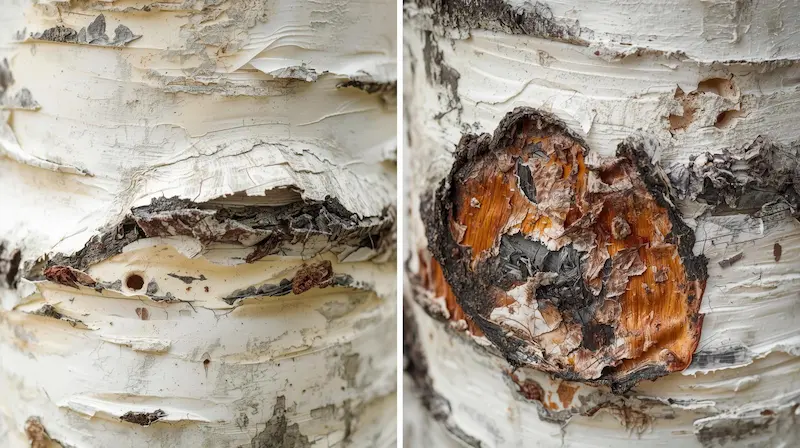
Credit Homes and Looms
Common Causes of Problematic Tree Bark Loss
Think of your tree’s bark as a language, it communicates stress, damage, and disease. Learning to “read” these signals helps you identify underlying problems before they become severe. One of the most common culprits behind bark damage is pests and insects.
Pests and Insects: Unwanted Bark Eaters
How Pests Damage Bark
Insects can attack bark directly, burrow beneath it, or create wounds that allow other pathogens to invade. Their activity often disrupts the tree’s nutrient flow and weakens its defenses.
Bark Borers (e.g., Emerald Ash Borer, Bronze Birch Borer, Shot Hole Borer)
- Damage: Larvae tunnel through the cambium layer beneath the bark, cutting off essential nutrient transport.
- Symptoms: D-shaped or round exit holes (specific to each borer type), serpentine (S-shaped) tunnels visible when bark peels, sawdust-like frass emerging from holes, vertical cracks, and dieback in the canopy.
- Visual Suggestion: Close-up of a tree trunk showing D-shaped exit holes and sawdust/frass.
Scale Insects
- Damage: These sap-sucking insects weaken trees, making bark more likely to peel or crack under stress.
- Symptoms: Small, immobile bumps (scales) on bark and twigs, often accompanied by yellowing leaves, premature leaf drop, and black sooty mold growing on honeydew secretions.
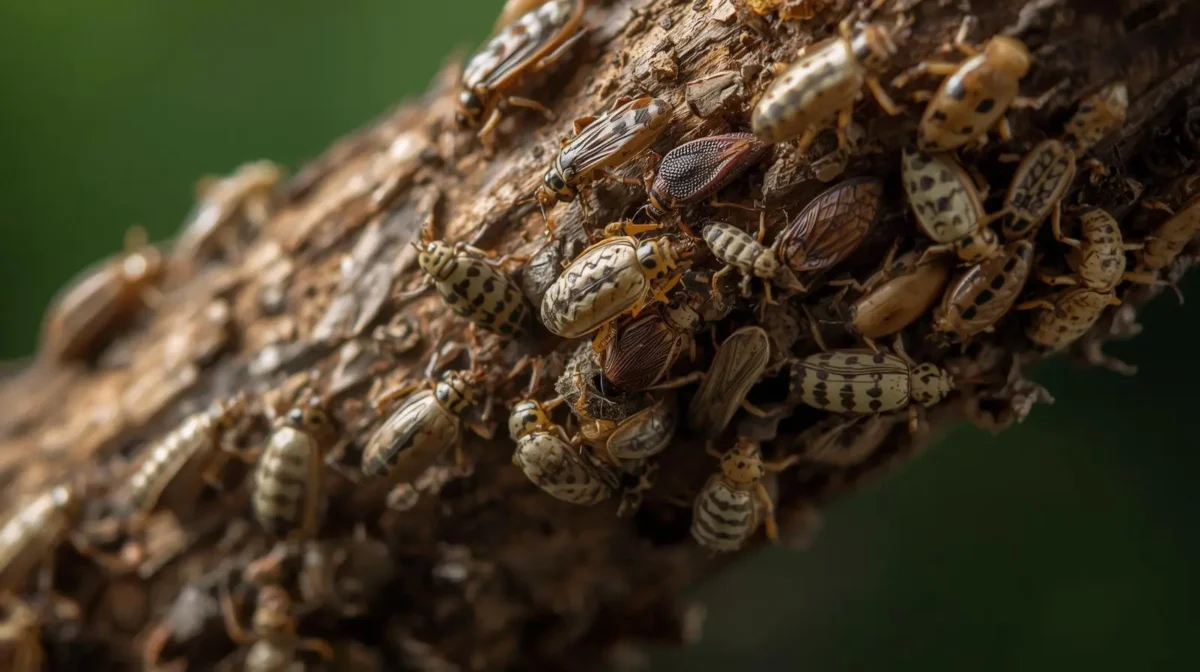
Credit Homes and Looms
Termites and Ants
While they rarely eat living bark, they can nest in compromised or decaying wood beneath the bark, exacerbating existing damage.
Product Recommendation:
Insecticidal soaps or horticultural oils are effective for managing soft-bodied pests like aphids or scale, which can indirectly affect bark health by stressing the tree. Always follow label instructions carefully.
Expert Tip:
Don’t rush to treat. Misdiagnosis can worsen the problem. Take the time to identify the exact pest before applying any treatment. Incorrect pesticide use can harm beneficial insects and the surrounding environment.
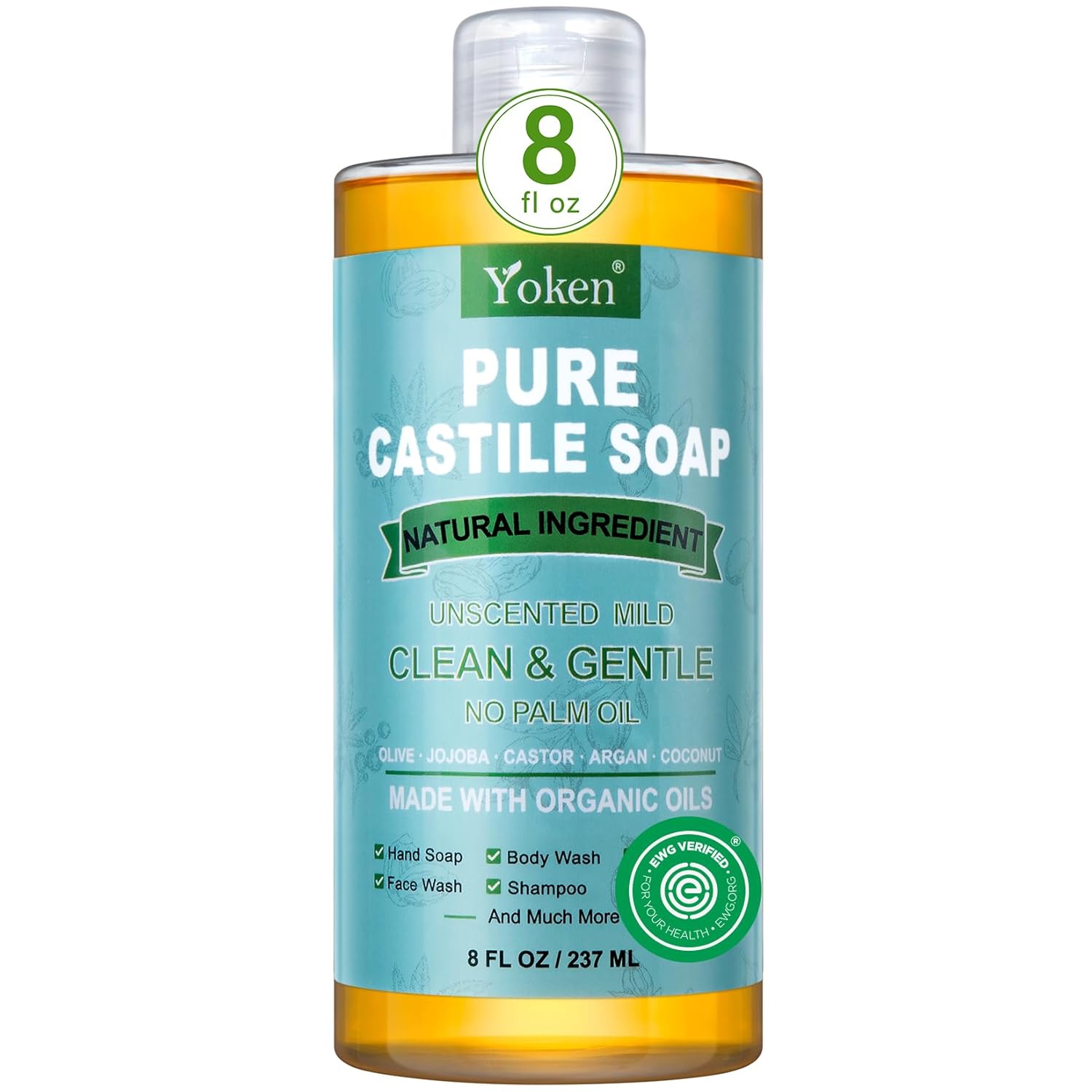
Pure Castile Liquid Soap Organic (EWG Verified, Unscented, 8 OZ), Made with Organic Oils, No Added Fragrance, Vegan, Castile Soap Liquid for Face, Laundry, Dishes, Sensitive Skin, Travel soaps
Fungal and Bacterial Diseases: Pathogens Attacking the Protective Layer
Bark problems are often caused by pathogens that directly damage the tree’s protective layer. Fungi and bacteria can lead to lesions, cankers, and decay, affecting both the bark and underlying tissues.
Cankers (e.g., Nectria Canker, Cytospora Canker, Hypoxylon Canker)
- Damage: Fungi or bacteria infect the bark through wounds, creating localized areas of dead tissue.
Symptoms: Sunken, discolored lesions with raised edges. Cankers may ooze sap or display fungal fruiting bodies. If a canker girdles a branch or trunk, it can lead to dieback.
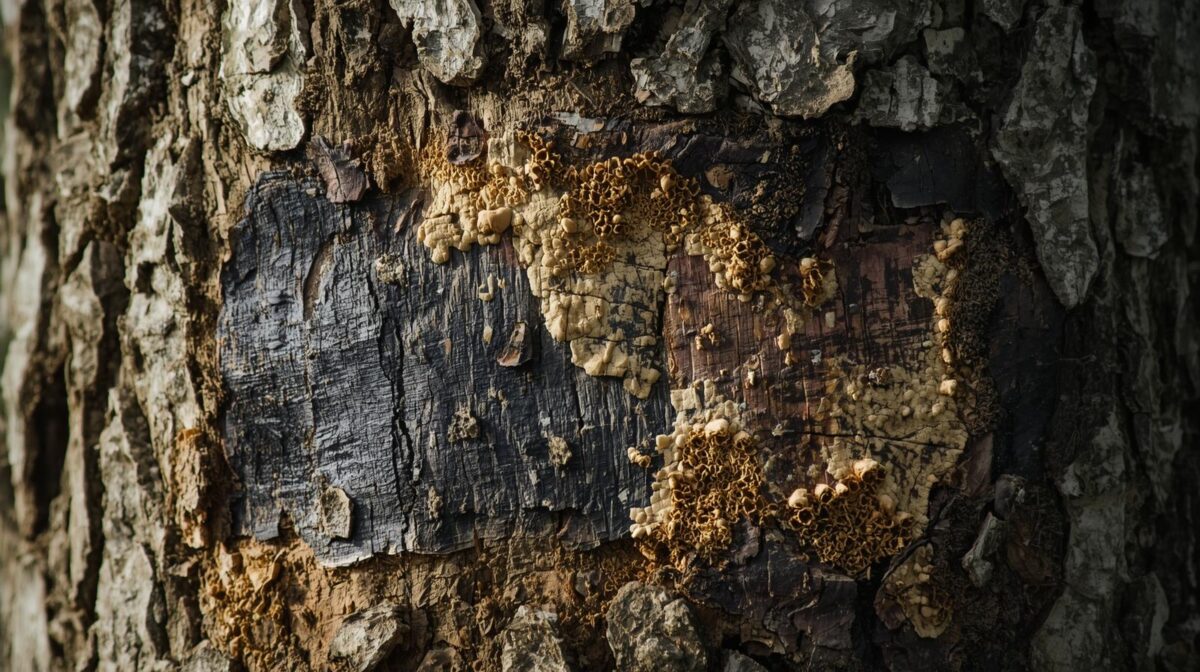
Credit to Homes and Looms
Root Rot (e.g., Phytophthora)
- Damage: Primarily a root disease, but severe root rot limits water and nutrient uptake, causing overall decline, including bark issues.
- Symptoms: Bark may appear water-soaked, discolored, and peel easily near the base.
Bacterial Wetwood / Slime Flux
- Damage: Bacteria ferment sap, creating internal pressure that forces liquid out through cracks or wounds.
- Symptoms: Dark, foul-smelling liquid oozing from bark cracks, often staining the trunk. Bark around affected areas may peel or discolor.
Product Recommendation: Fungicidal sprays can help in early stages or prevent fungal spread, but effectiveness varies by disease.
E-E-A-T : Always identify the exact pathogen before treatment. Consult certified arborists or local university extension advice, as most sprays are ineffective once visible symptoms appear.
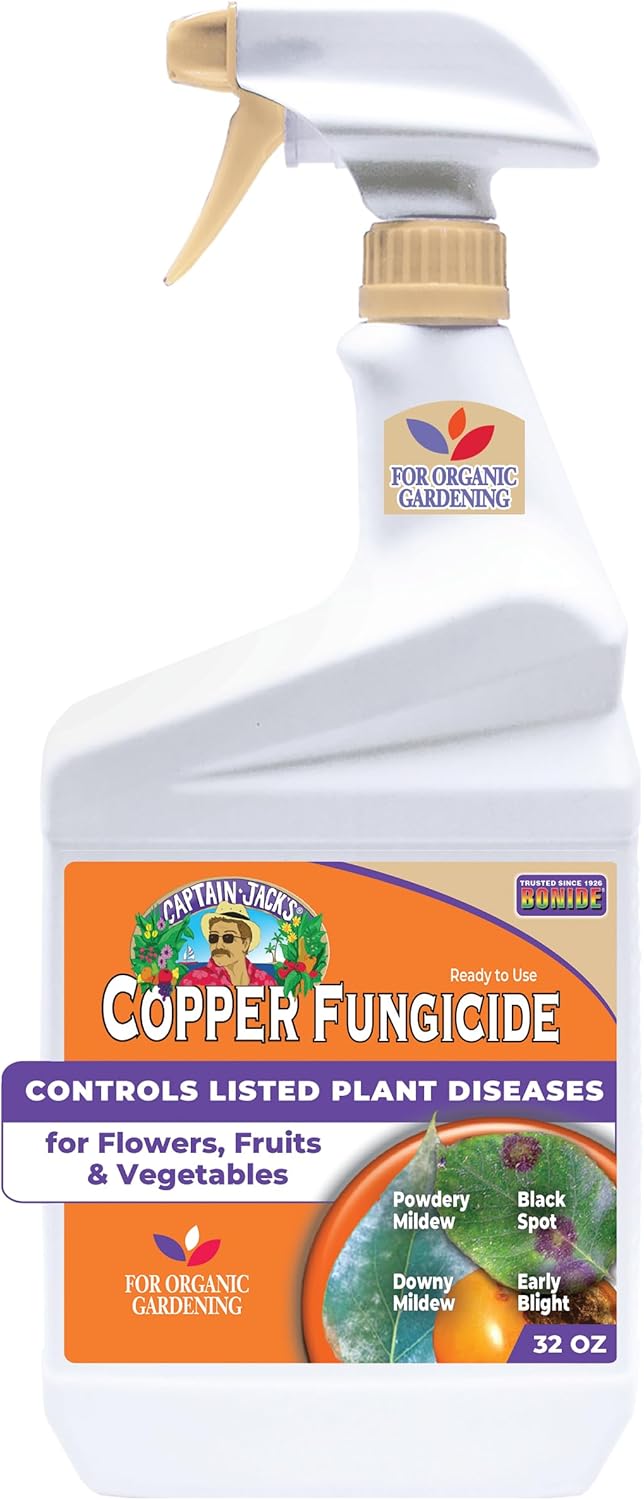
onide Captain Jack's Copper Fungicide, 32 oz Ready-to-Use Spray for Organic Gardening, Controls Common Diseases
Environmental Stress: Nature’s Harsh Realities
Trees often show bark problems as a response to environmental stress, which can also impact the aesthetics of your landscape.
Sunscald
- Causes: Sudden exposure to intense sun, especially on thin-barked trees during winter. Rapid temperature fluctuations cause the bark to expand and contract, damaging tissue.
Symptoms: Cracked, sunken, and discolored bark, often on one side of the trunk, with peeling revealing dead wood underneath.
Drought Stress
- Causes: Extended periods without water, particularly for young trees.
- Symptoms: Wilting, yellowing leaves, premature leaf drop, and eventually bark cracking or loosening.
- Expert Tip: Practice proper, deep watering during dry spells, with more frequent watering for young trees.
Frost Cracks
- Causes: Rapid temperature changes, especially after a warm day followed by a hard freeze. The outer bark contracts faster than the inner wood, causing vertical cracks.
- Symptoms: Long, vertical cracks, commonly on south-facing sides.
- Regional Advice: In arid regions, drought stress is common; in cold climates, sunscald and frost cracks are more prevalent.
- Product Recommendation: Use tree guards or wraps for young, thin-barked trees on the sunny side during winter.
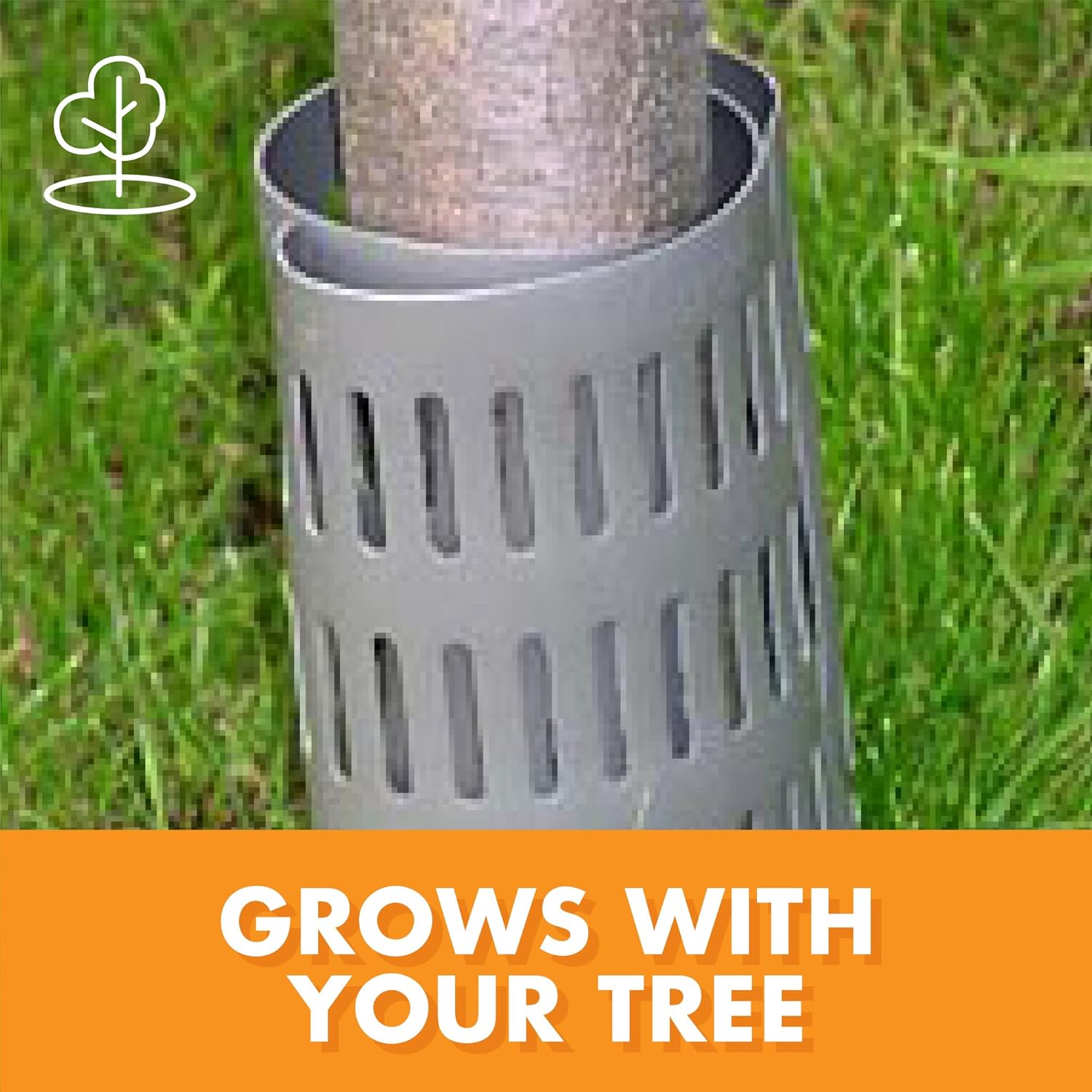
Dimex EasyFlex Plastic Tree Trunk Protectors, 6 Count, Grey
Mechanical Damage and Poor Pruning: Human-Induced Injuries
Not all bark problems are natural; many are caused by human activity, and knowing when to seek professional help is crucial.
Mower Blight / Weed Trimmer Damage
- Causes: Equipment striking the trunk, exposing sensitive inner tissues.
- Symptoms: Jagged wounds near the base, leading to peeling, decay, and entry points for pests.
- Expert Tip: Protect the base with a mulch-free zone.
Construction Damage
- Causes: Root compaction, soil grade changes, trenching, or direct trunk injury.
- Symptoms: Bark cracks, branch dieback, and delayed decline, sometimes appearing months or years later.
Improper Pruning Cuts
- Causes: Leaving stubs, flush cuts, or tearing bark during branch removal.
- Symptoms: Poor wound closure, cankers, and localized bark death.
- Expert Tip: Use clean, sharp tools and make cuts just outside the branch collar.
- Product Recommendations:
- Pruning shears/saws for proper branch removal.
- Tree wound sealant/paint only in specific cases; generally, trees heal by compartmentalisation, not scabbing.
- Pruning shears/saws for proper branch removal.
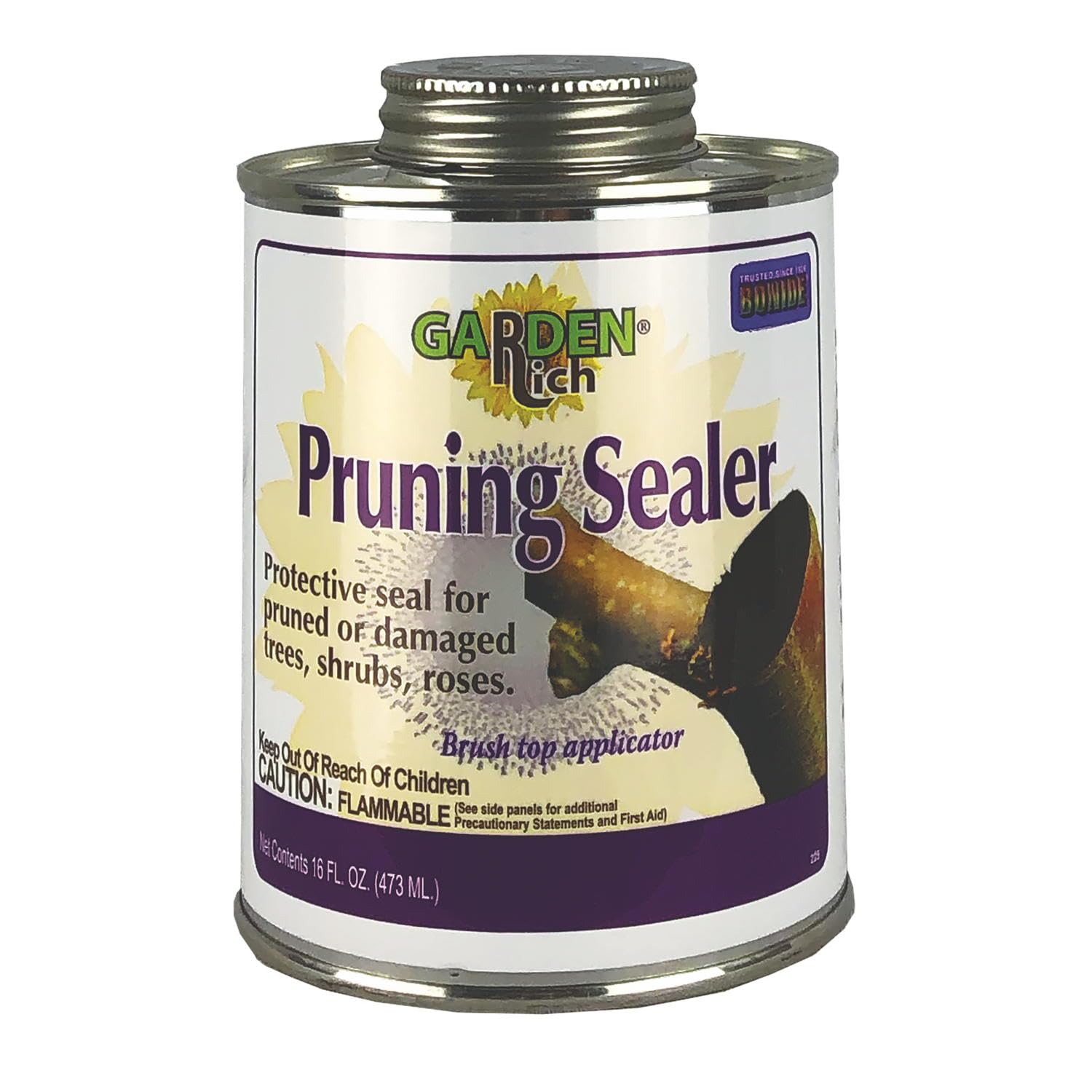
Bonide Garden Rich Pruning Sealer with Brush Top Applicator, 16 oz Ready-to-Use Protective Seal for Trees, Shrubs, Roses
Nutritional Deficiencies & Soil Issues: Hidden Hunger
The condition of a tree’s bark often reflects soil health. Poor soil can lead to chronic stress and secondary bark problems.
- Compacted Soil: Restricts root growth and nutrient uptake.
- Nutrient Imbalances: Deficiencies in essential elements (iron, manganese) weaken the tree.
- Improper pH: Nutrient availability is affected by high or low pH.
- Excess Moisture / Poor Drainage: Promotes root rot, which manifests as bark issues.
Expert Tips:
- Improve soil health with amendments, aeration, or pH adjustments based on soil tests.
- Avoid “volcano mulching”; keep mulch several inches away from the trunk to prevent moisture buildup and pest issues.
Product Recommendation: Soil test kits help identify nutrient deficiencies and pH imbalances, allowing for targeted interventions.
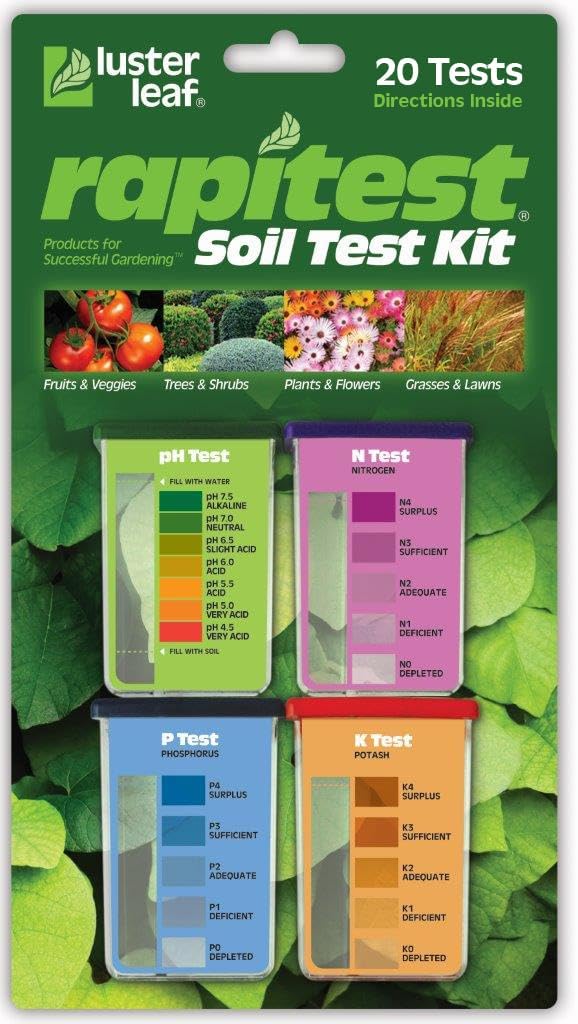
Rapitest Soil Test Kit for Gardens, Vegetables, Flowers and Lawns. USA designed and assembled soil tester completely, quickly and accurately measures/analyzes soil pH acidity and garden nutrients.
How to Diagnose Peeling Bark: A Step-by-Step Guide
Peeling bark can be confusing, leaving homeowners unsure whether it’s harmless or a sign of serious stress. A systematic approach helps you interpret the “language” of your tree and decide the best course of action.
Tree Bark Diagnostic Checklist
|
Observation/Question |
What It Might Indicate |
Action Step |
|
1. Is the peeling uniform or patchy/irregular? |
Uniform & healthy underneath: natural shedding. Irregular: disease, pests, injury. |
If uniform, research your tree species’ natural bark. If irregular, proceed with detailed inspection. |
|
2. What does the bark underneath look like (color, texture)? |
Healthy/light: normal. Dark/wet/mushy/fungal: disease or excess moisture. Discolored/dry/dead: sunscald, disease, stress. |
Note observations to narrow down causes. |
|
3. Are there holes (D-shaped, round), sawdust (frass), or tunnels? |
Bark borers or insect galleries. |
Look for live insects. Consider specific insecticidal treatment or professional help. |
|
4. Is sap oozing, often foul-smelling or staining the trunk? |
Slime flux or bacterial canker. |
Clean the affected area gently. Consult an arborist if persistent or widespread. |
|
5. Are there cankers (sunken lesions with raised edges)? |
Fungal or bacterial disease. |
Prune small infected branches using proper technique. Seek an arborist's advice for trunk cankers. |
|
6. Is the damage mainly on the south/southwest side? |
Sunscald due to environmental stress. |
Consider tree wraps for young trees and ensure proper watering. |
|
7. Are there obvious physical wounds (mowers, construction, poor pruning)? |
Mechanical injury creates disease entry points. |
Clean wound edges gently, prevent further injury, and monitor for infection. |
|
8. Are other symptoms present (wilting leaves, branch dieback, fungal growth)? |
Widespread decline: severe stress, root rot, advanced disease. |
Urgent professional diagnosis and intervention are recommended. |
|
9. Any drought, extreme cold/heat, or construction activity recently? |
Environmental/site stress. |
Adjust watering, mulch properly, and protect from future extremes. |
|
10. Is the soil compacted or very wet/dry? |
Nutritional deficiency, root stress, or root rot. |
Conduct soil test, improve drainage/aeration, adjust watering. |
Solutions and Treatment Options for Peeling Bark
Peeling bark can be alarming, but effective treatment and preventative measures depend on correctly identifying the cause. Following evidence-based practices ensures that your interventions are both safe and effective.
Tailoring Solutions to the Cause
- Pest Infestations
- Horticultural Oils & Insecticidal Soaps: Smother soft-bodied insects like scale. Always follow label instructions for timing and application.
- Targeted Systemic Insecticides: Used for borers, these are usually applied by certified professionals and require precise timing to be effective.
- Biological Controls: Introducing beneficial insects, such as ladybugs, can help naturally control pest populations in some situations.
- Fungal & Bacterial Diseases
- Pruning Infected Branches: Remove cankered or diseased wood back to healthy tissue using proper pruning techniques. Sterilize tools between cuts to prevent spreading pathogens.
- Fungicides/Bactericides: Often preventative or specific to certain diseases. Consult an arborist for accurate diagnosis and product recommendations.
- Improving Air Circulation: Thinning the canopy (where appropriate) reduces humidity and limits fungal growth.
- Environmental Stress
- Proper Watering: Provide consistent, deep watering during dry periods, especially for young trees.
- Sunscald Protection: Apply tree wraps to young, thin-barked trees on the sunny side during winter.
- Mulching: Apply 2–4 inches of organic mulch, keeping it a few inches away from the trunk to conserve moisture and regulate soil temperature.
- Mechanical Damage
- Clean Wounds: Gently smooth jagged edges. Avoid unnecessary wound sealants, as trees naturally compartmentalize damage.
- Monitor: Watch for signs of secondary infections or pest infestations.
- Nutritional Deficiencies & Soil Issues
- Soil Amendments: Based on soil tests, apply fertilizers or organic matter to correct nutrient deficiencies or pH imbalances.
- Aeration: For compacted soils, consider deep root aeration to improve oxygen and water flow.
- Drainage Improvement: Address standing water issues through site grading or installing proper drainage.
DIY vs. Professional Solutions: Cost Considerations
|
Solution |
Typical DIY Cost |
Professional Service Cost |
Notes |
|
Soil Test Kit |
$15–30 |
– |
Simple, helps identify deficiencies early. |
|
Horticultural Oil/Insecticidal Soap |
$10–25 |
– |
Effective for minor pest infestations. |
|
Pruning & Canopy Thinning |
– |
$100–500+ |
Large trees or severe disease require a certified arborist. |
|
Systemic Borer Treatment |
– |
$200–600+ |
Professional timing and application are crucial. |
|
Tree Wraps & Mulching |
$10–50 |
– |
Easy DIY for young trees; protects from environmental stress. |
This comparison helps homeowners decide which interventions are manageable themselves and which require professional expertise.
Preventative Measures: Keeping Your Tree's Bark Healthy
Peeling bark is often a warning sign, but the best approach is prevention. Think of this as a Proactive Tree Health Audit, a checklist to help homeowners protect their trees and maintain long-term bark health.
Fundamental Strategies for Long-Term Bark Health
- Proper Planting
- Choose the right tree for the site, select species suited to your local climate and soil.
- Plant at the correct depth, ensuring the root flare is visible above soil level.
- Consistent Watering
- Provide deep, infrequent watering, especially for young trees and during dry spells.
- Avoid overwatering, which can cause root rot and secondary bark problems.
- Strategic Mulching
- Apply 2–4 inches of organic mulch (wood chips or shredded bark) in a donut shape around the tree.
- Keep mulch 6–12 inches away from the trunk.
- Expert Tip: Avoid “volcano mulching,” which traps moisture against the trunk and can promote decay.
- Visual Suggestion: Infographic comparing correct mulching vs. volcano mulching.
- Protection from Mechanical Damage
- Create a mulch ring or barrier around the tree base to prevent mower or trimmer injury.
- Exercise care during gardening, landscaping, or construction near trees.
- Correct Pruning
- Remove dead, diseased, or damaged branches promptly.
- Use sharp, clean tools and make cuts just outside the branch collar.
- Expert Tip: Proper pruning prevents disease entry and promotes natural healing.
- Sunscald Protection (for susceptible trees)
- Apply tree wraps to young, thin-barked trees during winter, especially on the sunny side.
- Alternatively, paint the trunk with a 1:1 mixture of white latex paint and water for long-term protection (particularly for fruit trees).
- Expert Tip: Sunscald protection is especially important for young trees exposed to intense sunlight.
- Regular Inspections
- Make it a habit to walk around your trees periodically.
- Look for changes in bark, leaves, or overall vigor.
- Expert Tip: Early detection of stress, pests, or disease allows for timely intervention.
Tree Health Scorecard & Action Plan
Offer a downloadable Tree Health Scorecard that allows homeowners to:
- Regularly assess their trees’ overall health, including bark condition.
- Track changes over time.
- Receive personalized action steps based on their score to prevent future problems.
This approach empowers homeowners to be proactive, maintaining healthy bark and preventing costly interventions later.
When to Call a Professional Arborist
It’s natural to want to try DIY solutions first, but some tree problems are too complex or severe for home intervention. Knowing when to call a professional arborist can save your tree, and prevent costly mistakes.
Clear Indicators for Professional Help
- Unexplained, Widespread, or Rapidly Progressing Bark Loss: If you cannot identify the cause, or the problem worsens quickly.
- Large Cankers or Girdling Damage: Significant cankers on the main trunk, especially if they appear to encircle the tree.
- Suspected Borer Infestations: Destructive species like Emerald Ash Borer require specialized treatments that only a professional can safely apply.
- Advanced Disease Symptoms: Extensive leaf discoloration, branch dieback, or overall decline.
- Structural Concerns: Bark loss accompanied by trunk cracks, leaning, or other instability signs.
- Hazardous Trees: Any tree posing a risk to property or people due to poor health.
- Lack of Success with DIY Efforts: If your own interventions have not improved the tree’s condition.
Benefits of Professional Consultation
- Accurate Diagnosis: Arborists can correctly identify complex or hidden issues.
- Targeted Treatment Plans: They recommend and often apply specialized solutions such as systemic insecticides, therapeutic pruning, or disease-specific treatments.
- Safety: Working with large or unstable trees carries significant risk; professionals follow safety protocols.
- Long-Term Health Planning: Certified arborists can help you develop a comprehensive plan for ongoing tree care and bark health.
Expert Tip: Consult a certified arborist for any unexplained, widespread, or rapidly progressing bark loss. Look for credentials from the International Society of Arboriculture (ISA) to ensure expertise and credibility.
Conclusion: Protecting Your Tree's Vital Outer Layer
Peeling bark is not always a sign of crisis. Many trees naturally shed their outer layers as part of growth. However, vigilance and understanding are essential to distinguish between normal shedding and signs of distress. The main causes of problematic bark loss include pests and insects, fungal and bacterial diseases, environmental stress, mechanical damage, and soil or nutrient issues.
Early detection and appropriate action can make a significant difference in a tree’s health and longevity. Regular inspections, proper watering, mulching, pruning, and timely intervention are all part of keeping your tree strong and resilient.
By applying the diagnostic steps and preventative measures outlined in this guide, you become a keen observer of your tree’s bark, empowering yourself to protect its health and maintain its beauty in your landscape. Don’t let the mystery of peeling bark lead to tree loss; act decisively with knowledge and care.


